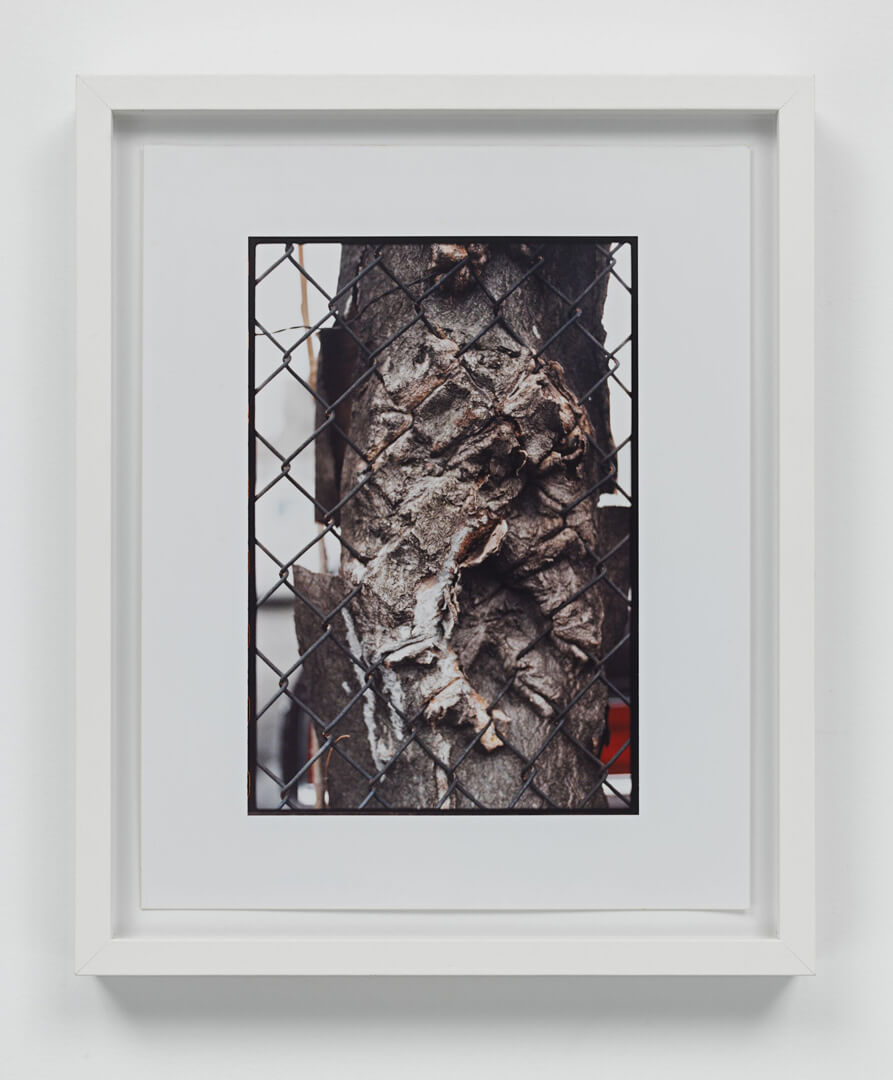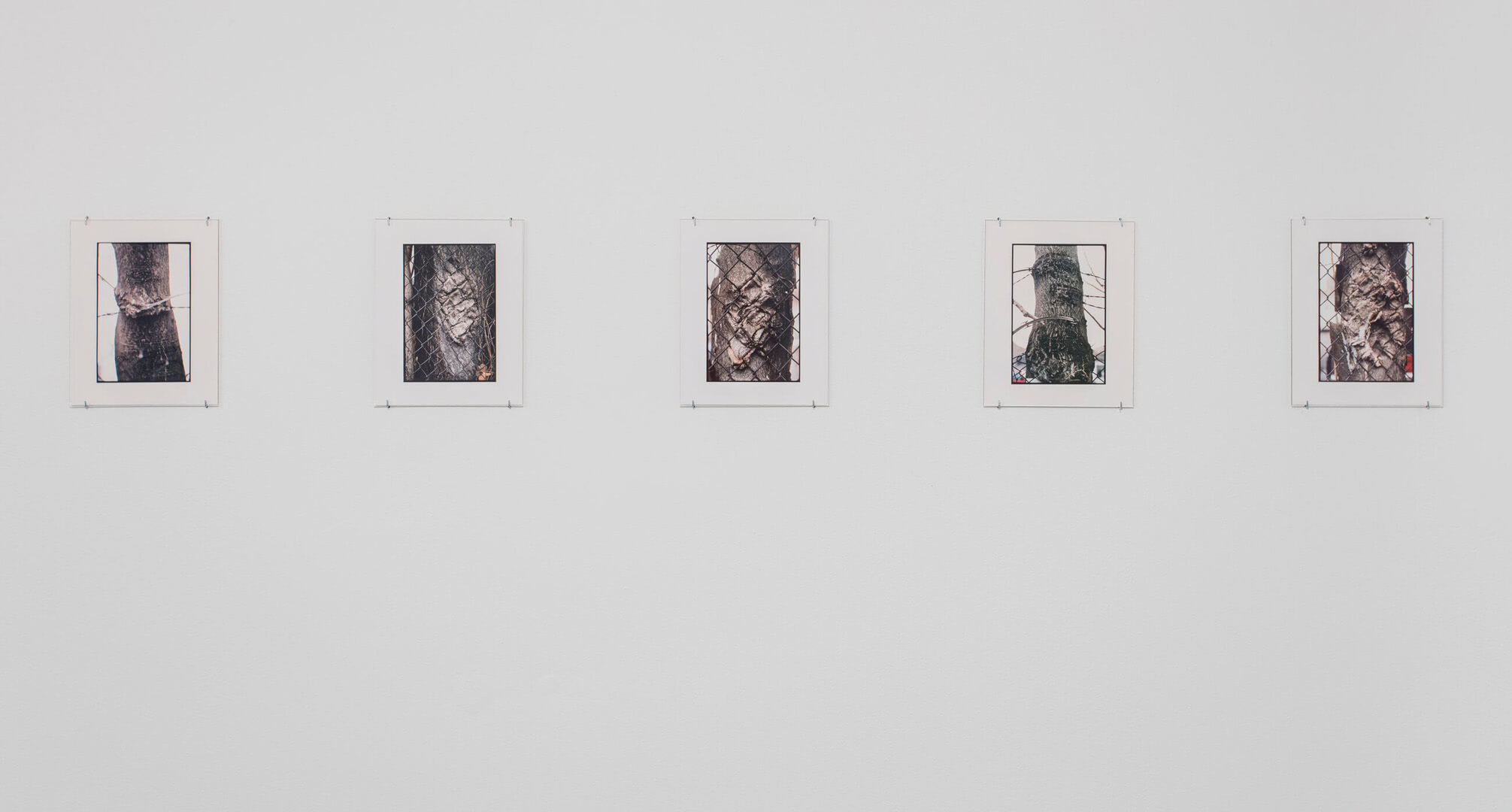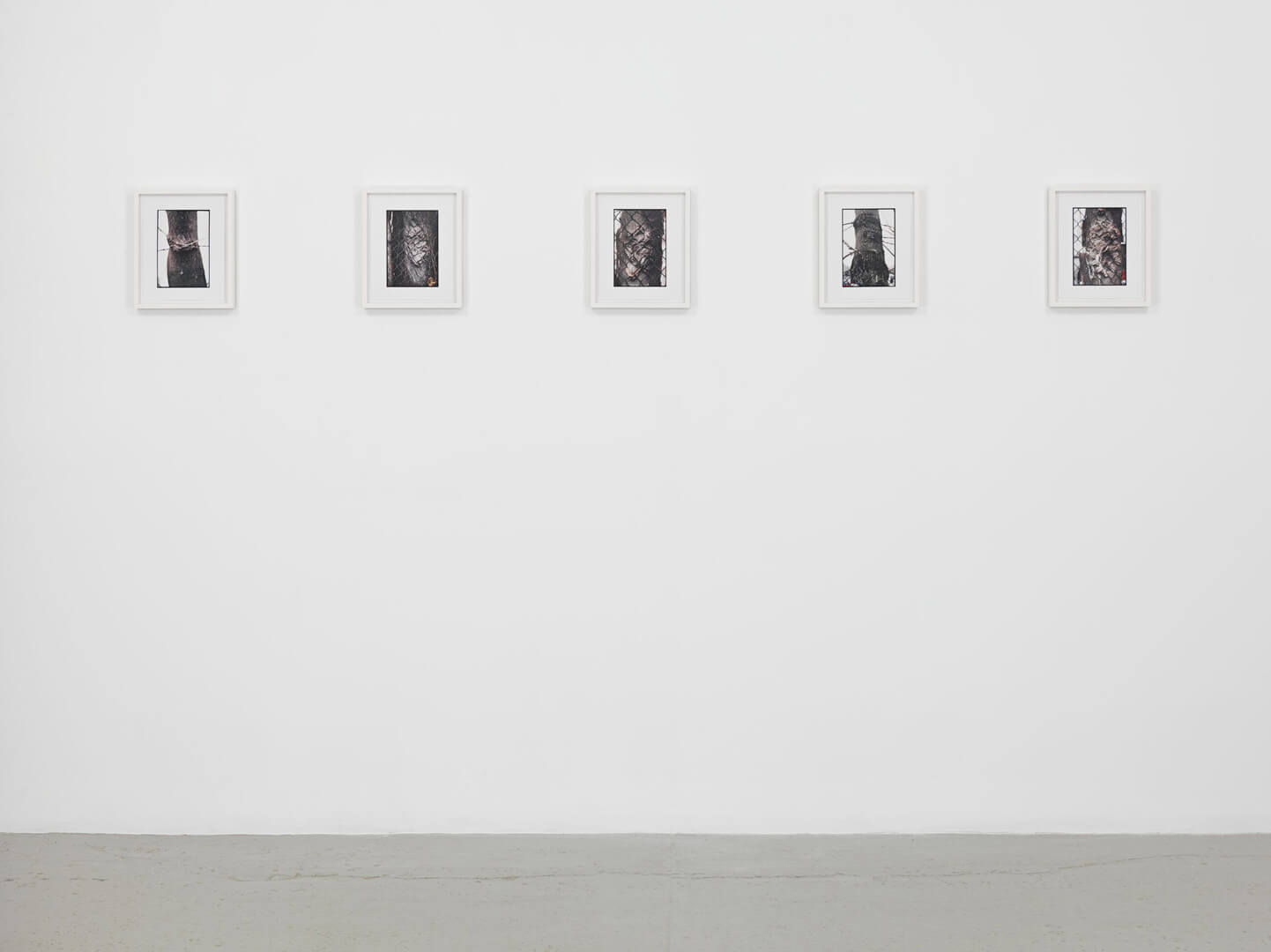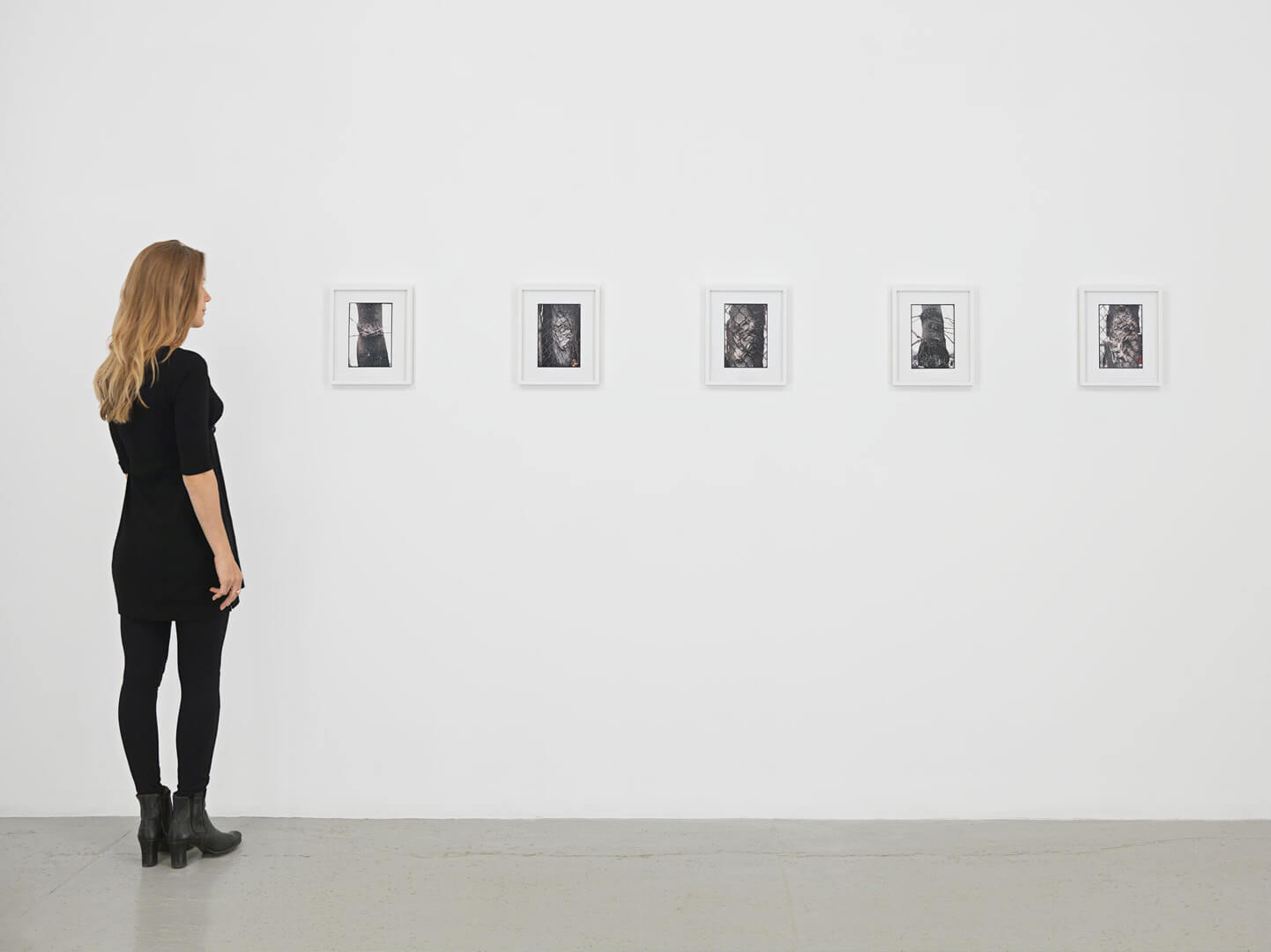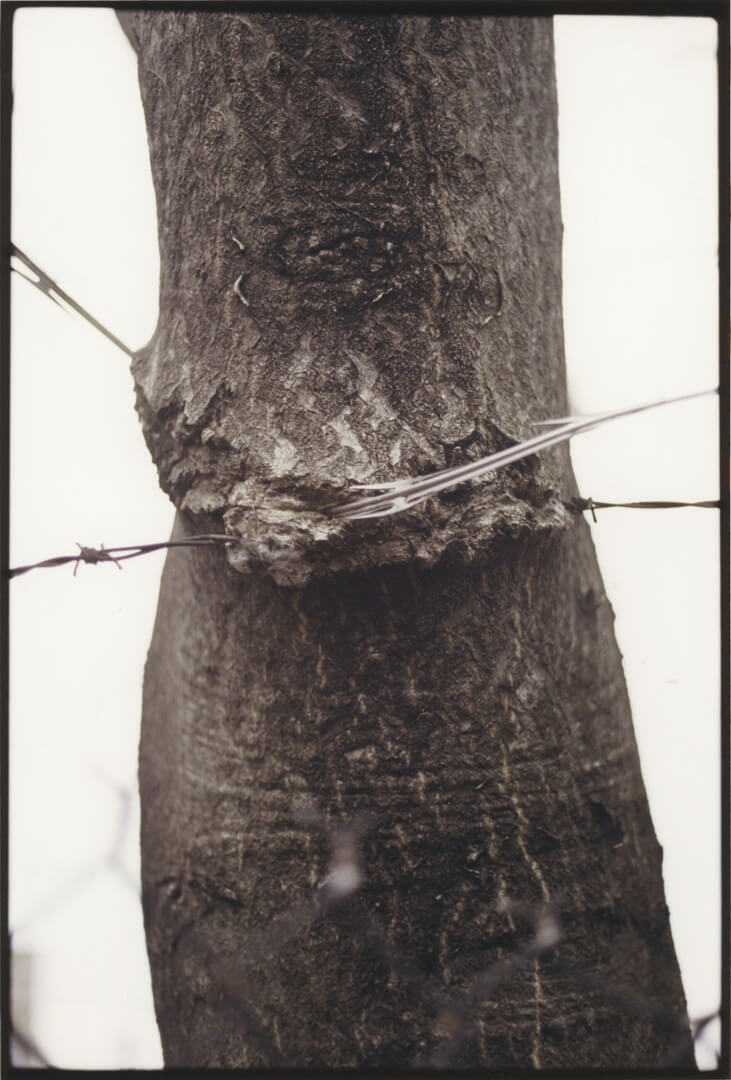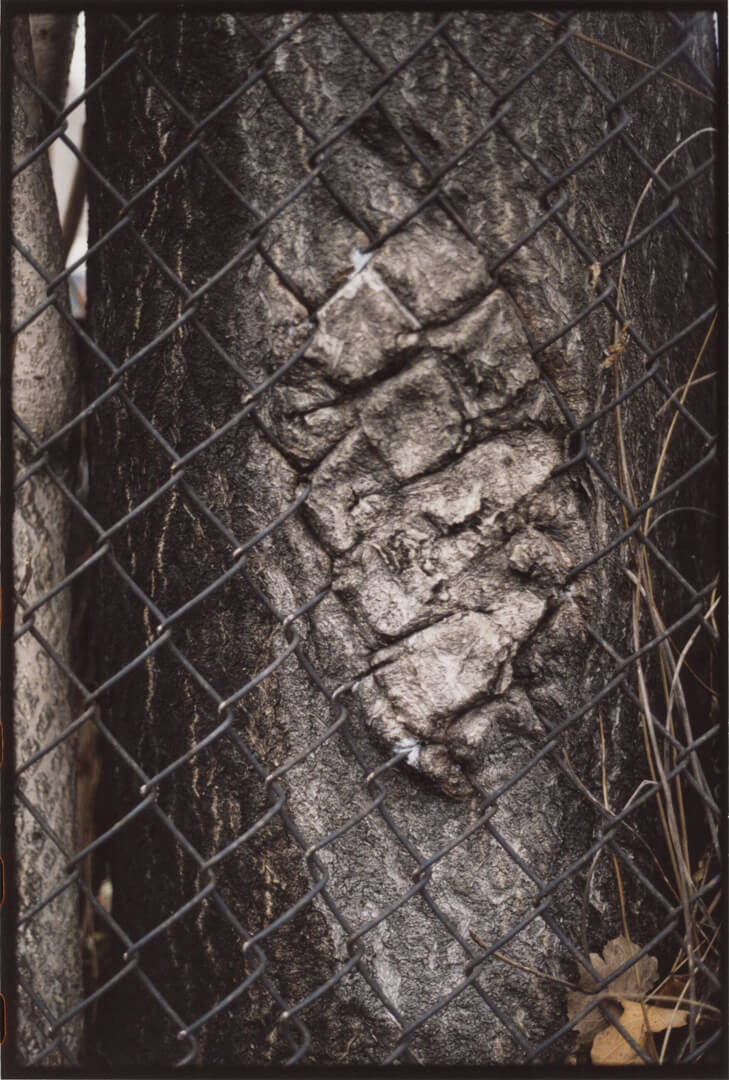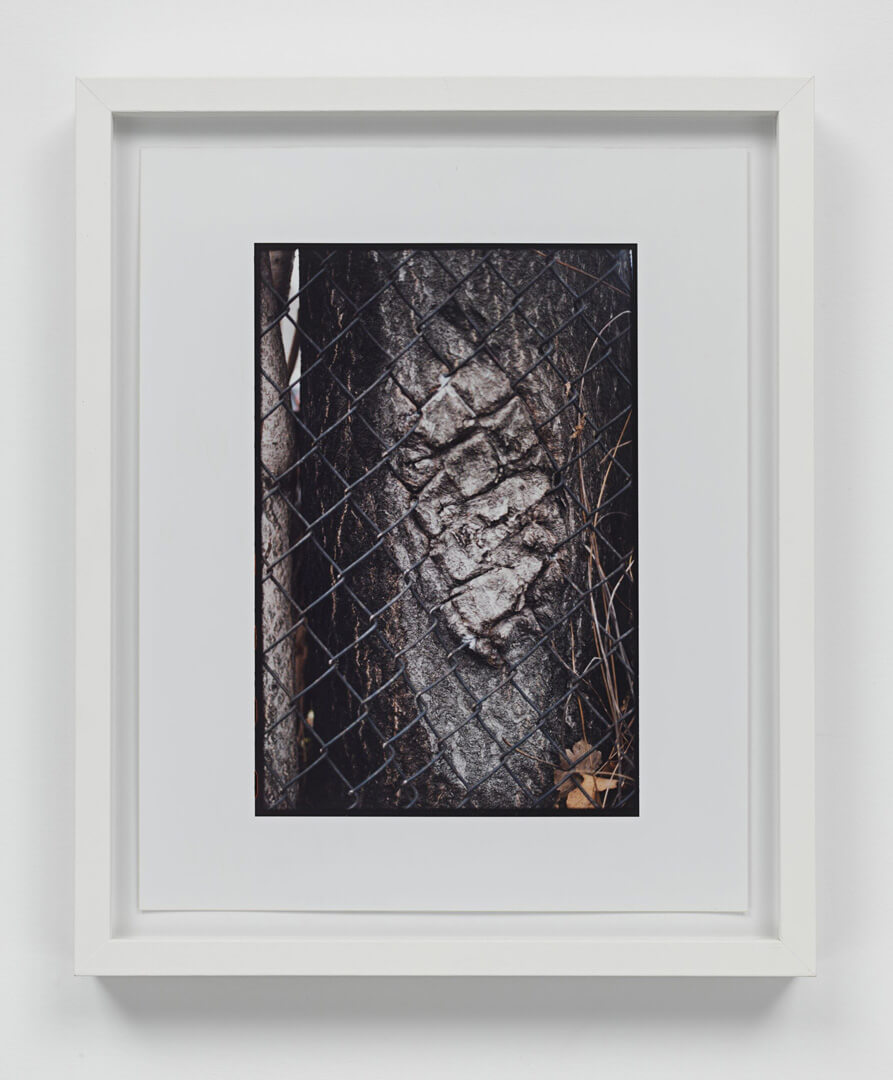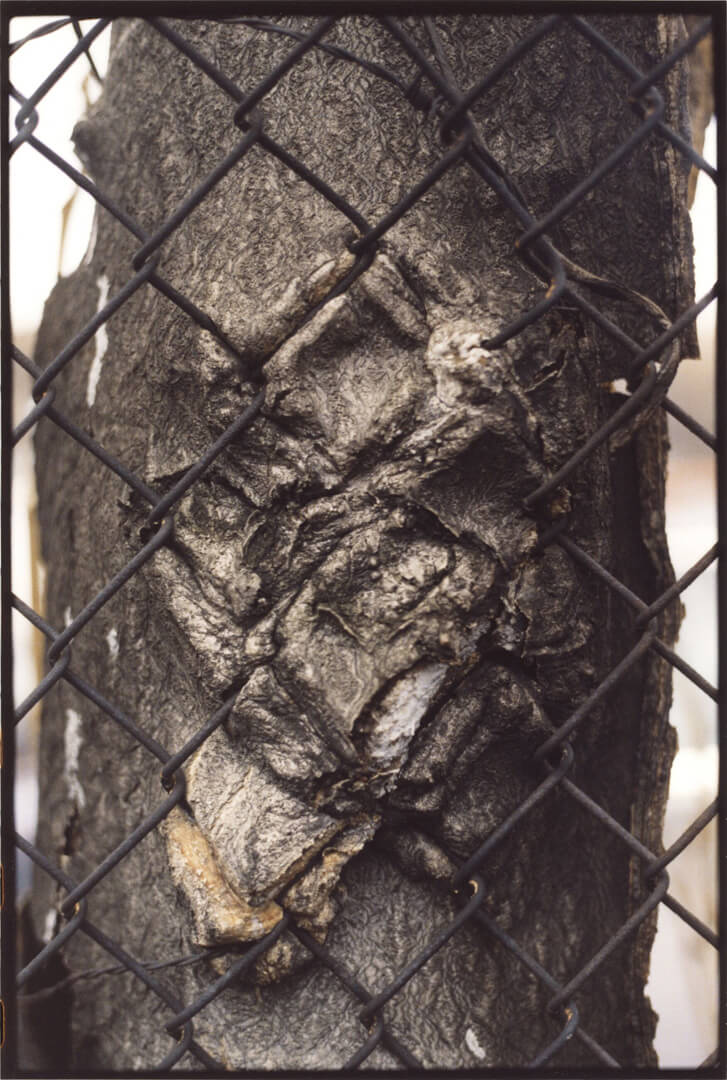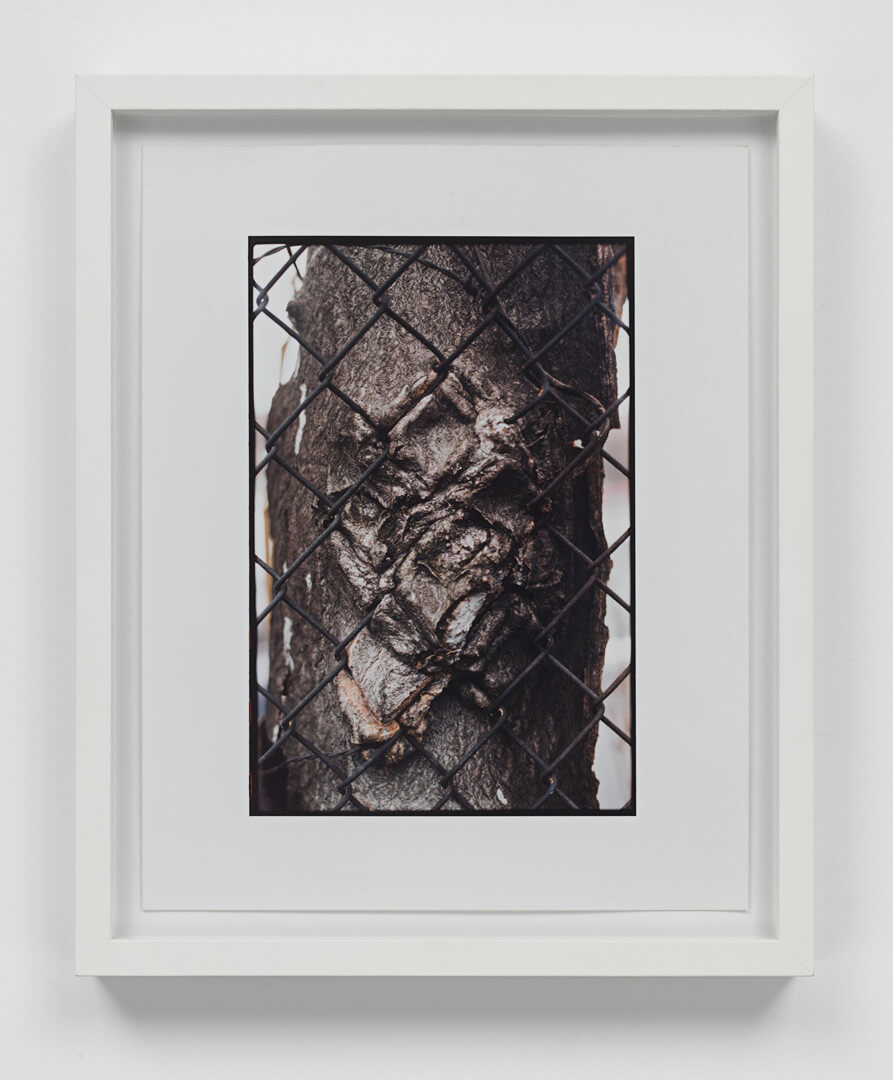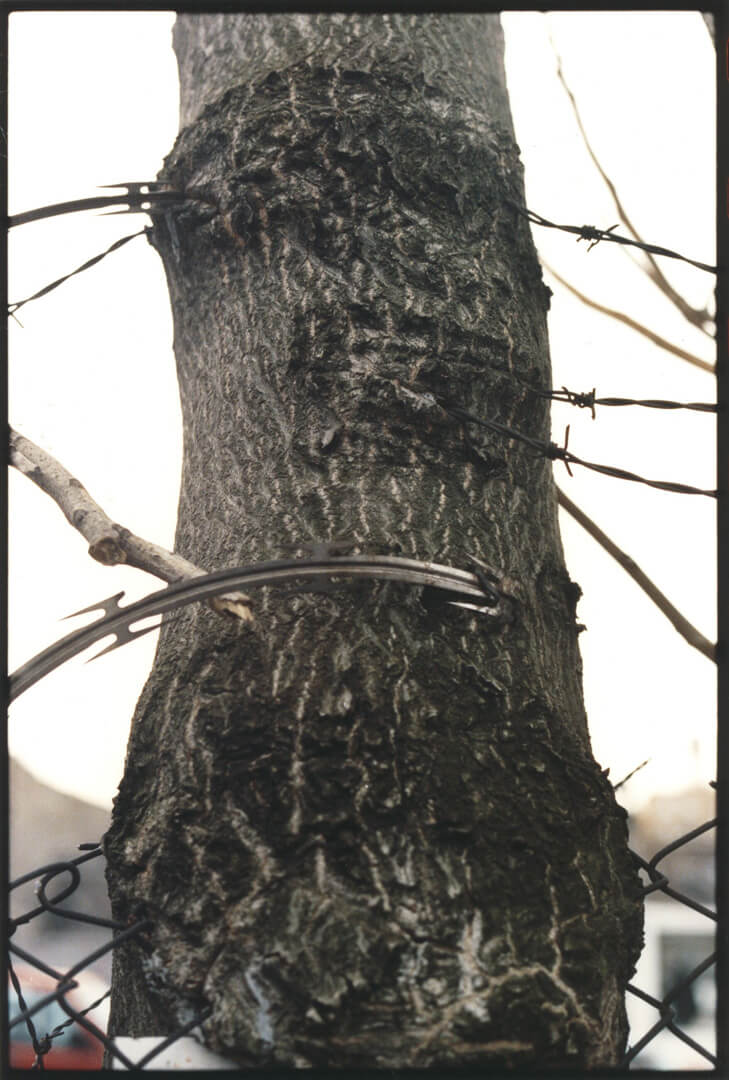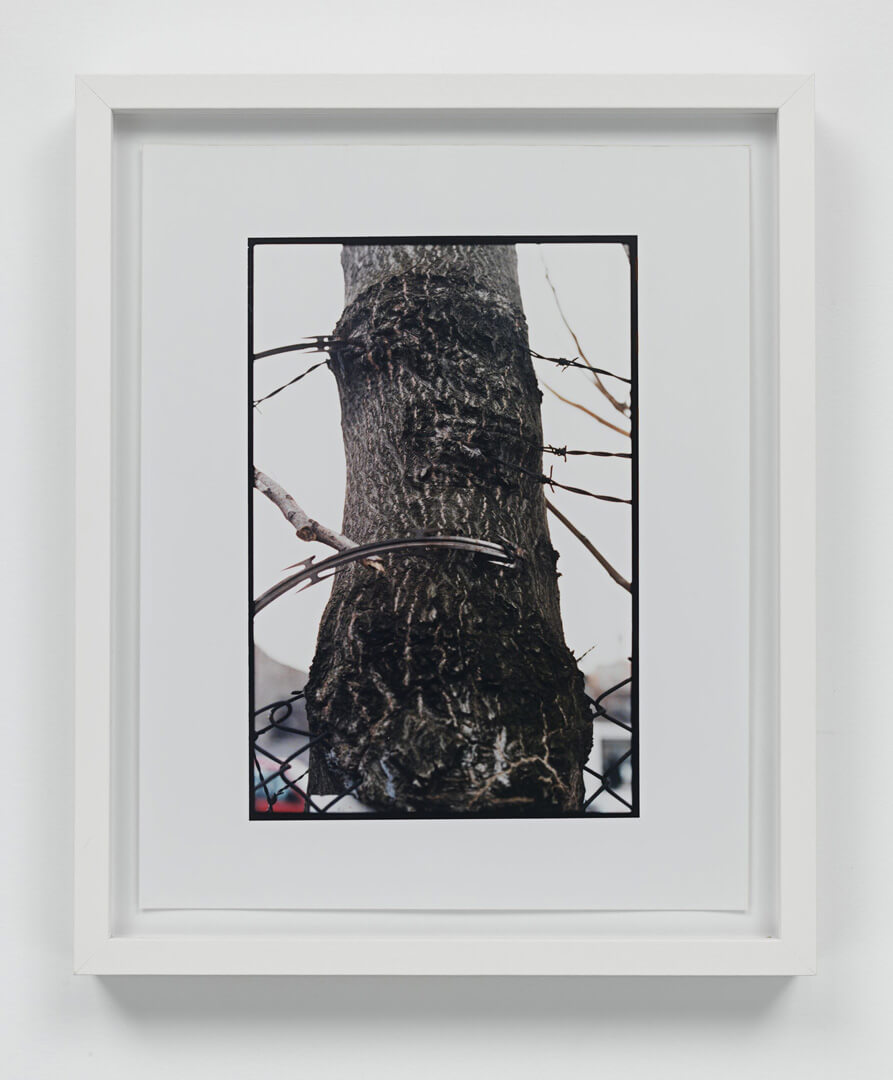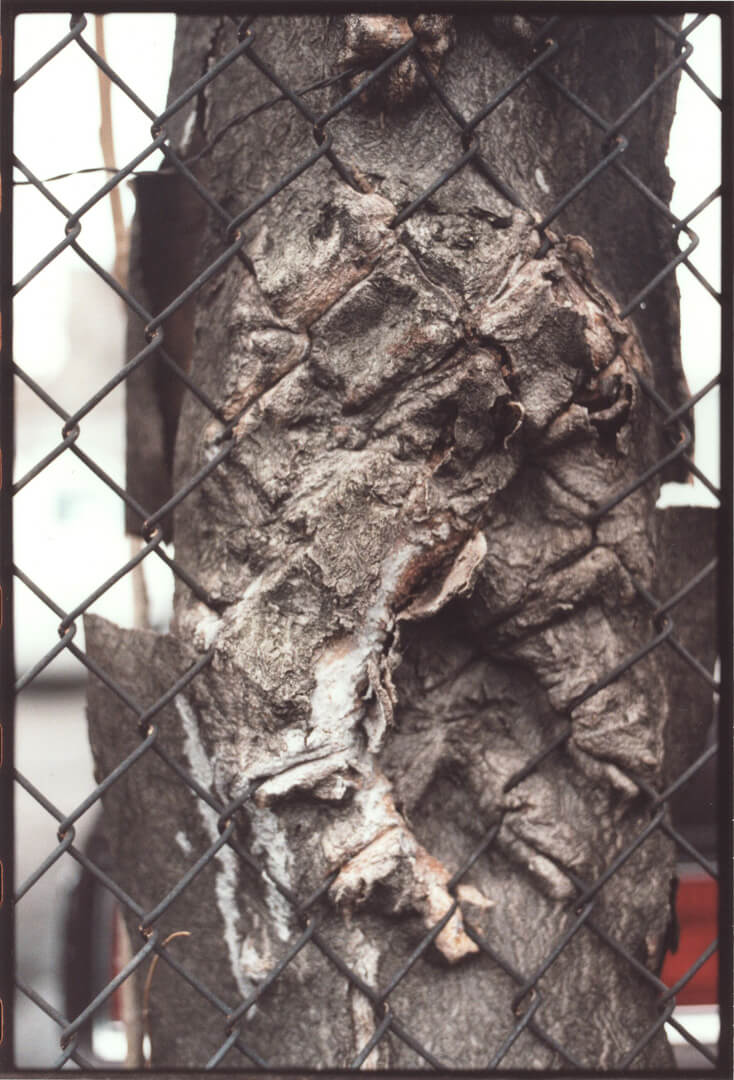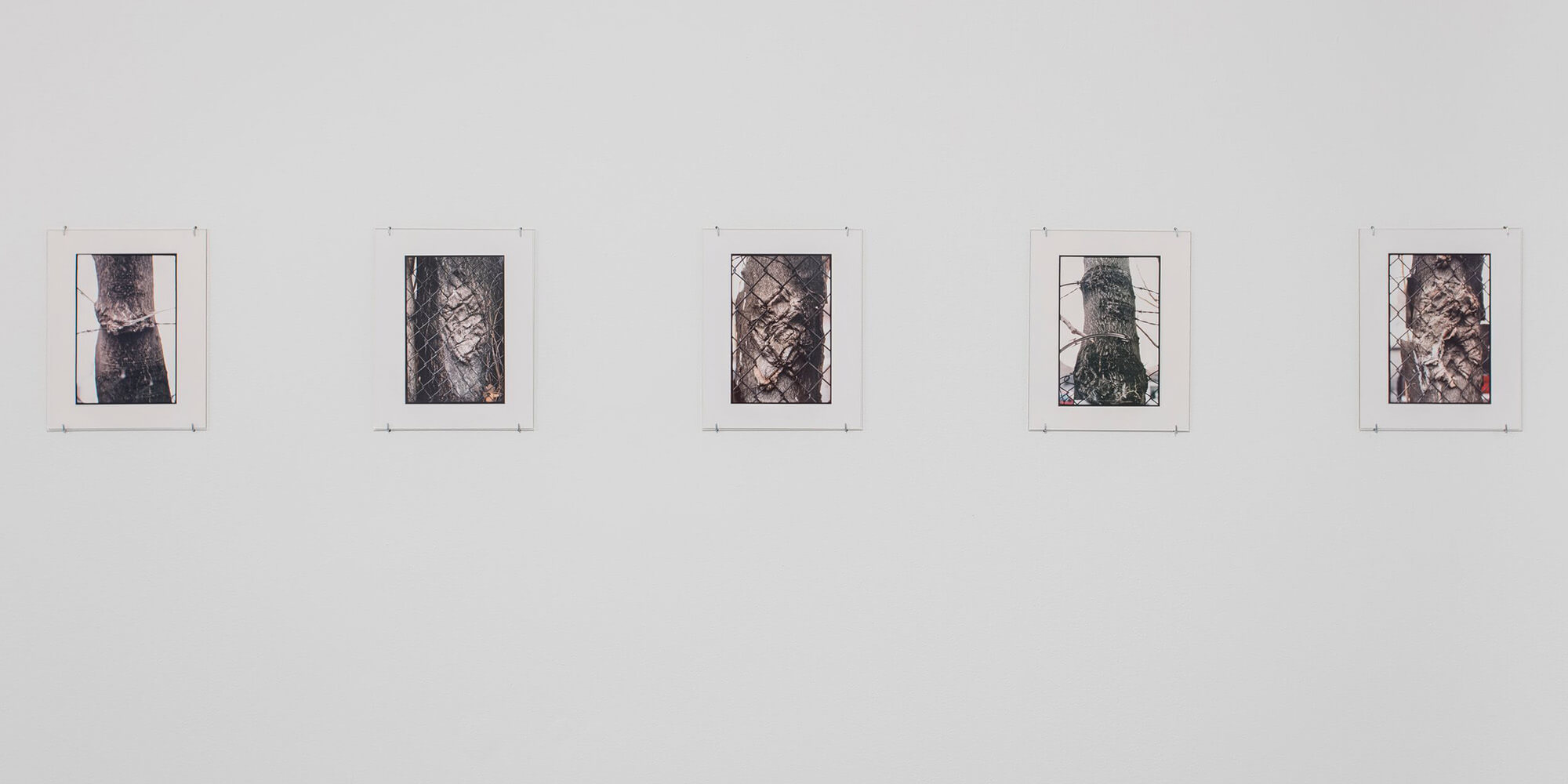
Zoe Leonard
Tree and Fence
Tree and Fence
2000 5 C-prints Edition of 6 25 x 20 cm / 9 7/8 x 7 7/8 in (each)
Although nature features prominently in Zoe Leonard’s work, she became particularly interested in the subject in the mid-1990s, following a prolonged stay in the remote Alaskan village of Eagle. Upon returning to New York, she began to draw connections between environmental protection and human rights and became fascinated with the urban impulse to contain nature and the way certain trees would consume or burst through surrounding fencing structures.

Leonard has said that she took most of the Tree and Fence pictures in a single winter in New York. She observed that there were ‘trees that have grown around or through fences and gates. In some cases they have absorbed the metal structure and grown swollen lumps covered in bark; in other cases they’ve leaked out between the bars, or sometimes bent or even broken their enclosures.’
‘Trees show up in my work over and over again. I think I use them so much because they are such an essential symbol. Trees represent home, shelter, the seasons, change and stability, life and endurance. They offer wood and food: fire, building material, fruit. They are beauty. They occur as religious symbols—representing the connection between earth and sky, as signs of both abundance and longevity. They reflect seasonal changes clearly and dramatically. They indicate water sources and survival zones, marking oases in the desert, and timberline in the mountains. Although trees are much larger than we are, they sort of set the scale for us—we rest beneath them, cultivate them in orchards. Our language reflects our relationship with trees and forests. We speak of having roots, of bearing fruit, of family trees.’–Zoe Leonard in interview with Beth Dungan 2002
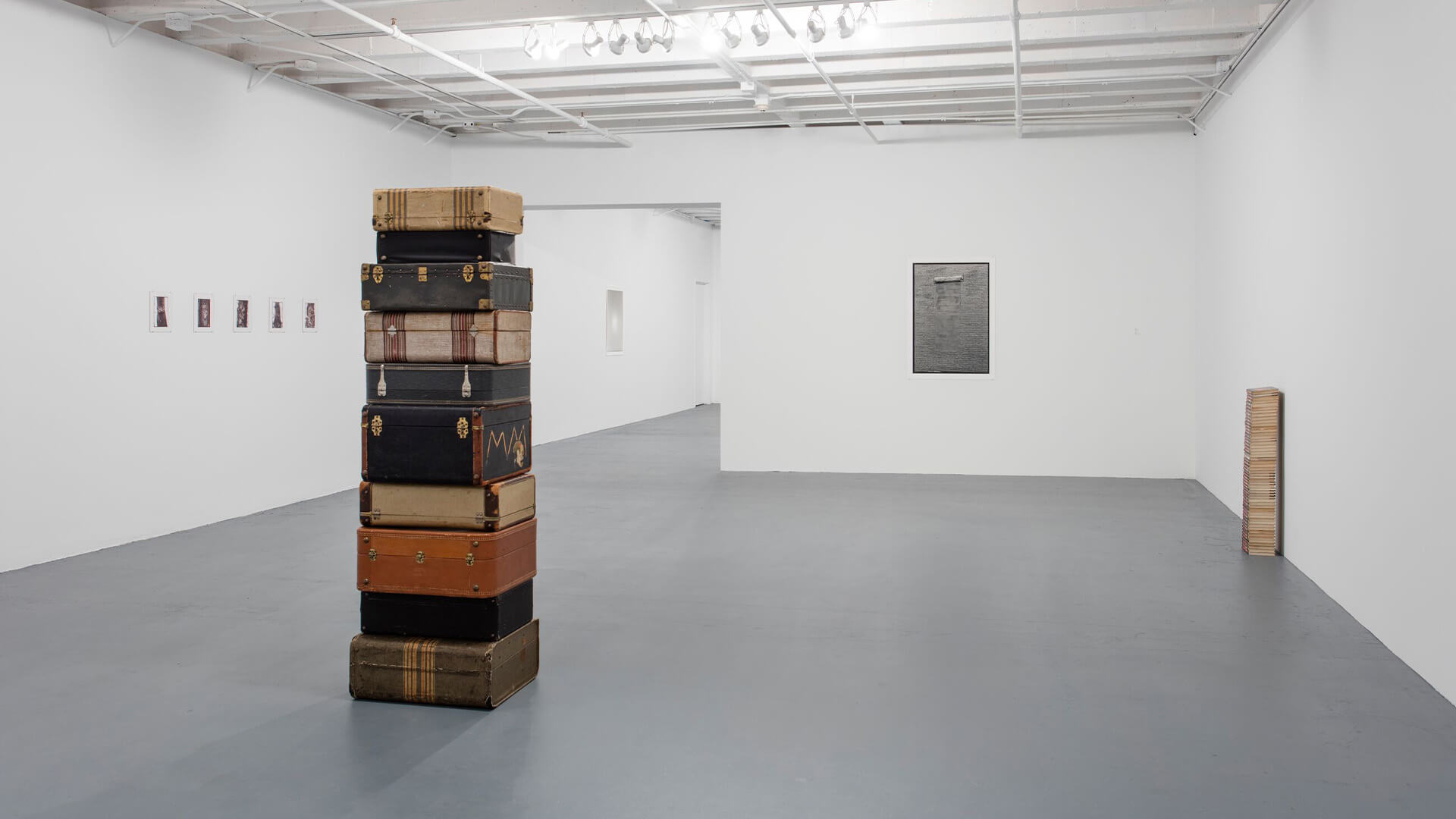
Zoe Leonard
New York-based artist Zoe Leonard balances rigorous conceptualism with a distinctly personal vision in her work, which merges photography, sculpture, and installation. By employing strategies of repetition, shifting perspectives, and a multitude of printing processes, Leonard’s practice probes the politics of representation and display. Leonard explores themes such as gender and sexuality, loss and mourning, migration, displacement, and the urban landscape. More than its focus on any particular subject, Leonard’s work encourages the viewer to reconsider the act of looking itself, drawing attention to observation as a complex, ongoing process.
Installation view, ‘Zoe Leonard: Survey’, The Geffen Contemporary at MOCA, 2018. Courtesy of The Museum of Contemporary Art, Los Angeles. Photo: Brian Forrest
